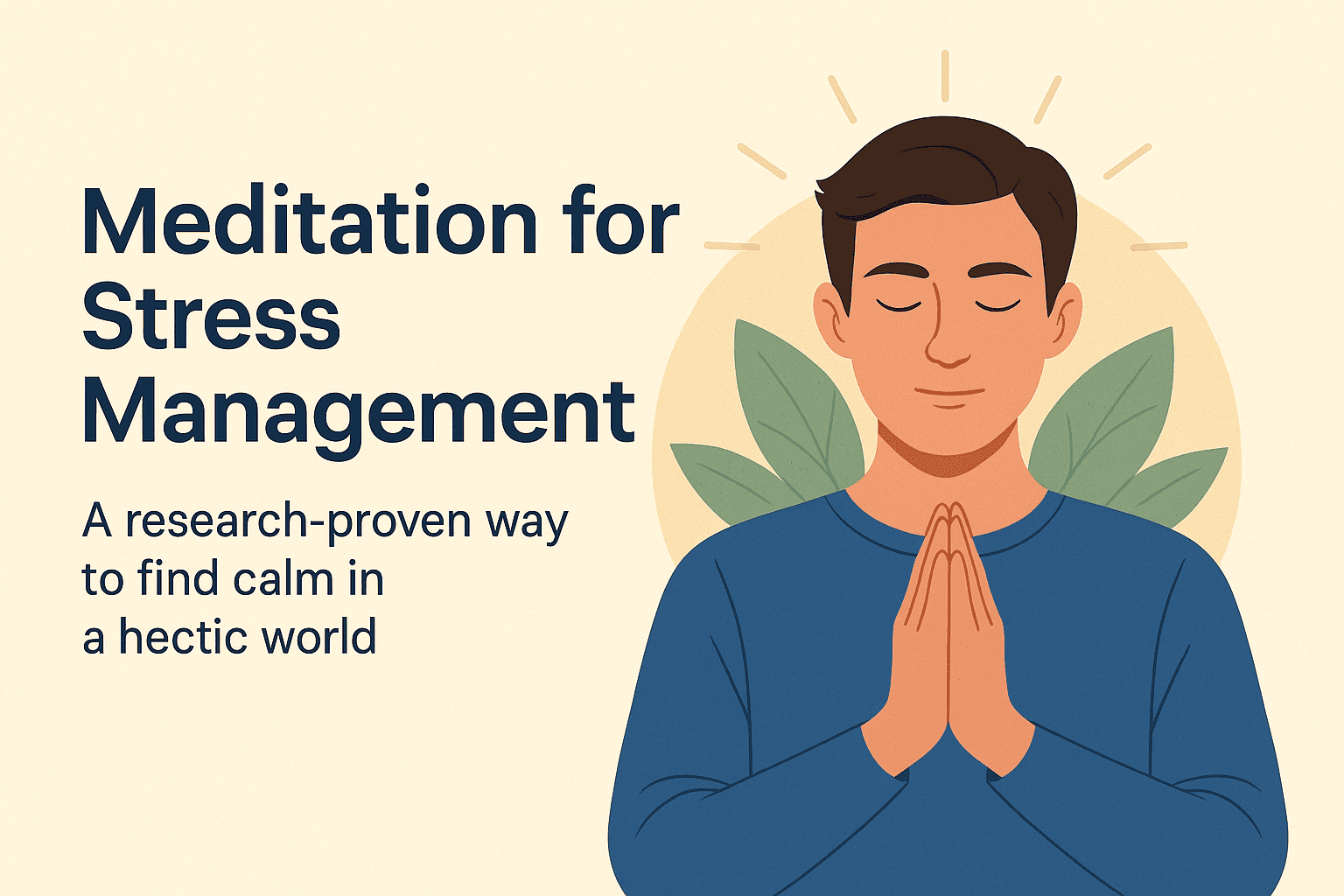
Meditation for stress management is more than just a wellness trend—it’s a research-proven way to find calm in today’s overwhelming world.
If you’ve been feeling constantly anxious, tense, or emotionally drained, you’re not alone. The nonstop pace of modern life, combined with work pressure and social expectations, can silently wear you down.
Research published by the American Psychological Association shows that mindfulness meditation can actually change your brain and biology in positive ways—improving your mental and physical health by reducing stress responses and enhancing emotional regulation.
In this article, you’ll discover simple and effective ways to use meditation for stress management, grounded in both science and personal experience. From beginner-friendly techniques to daily consistency tips, this guide offers practical tools to help you feel calmer and more in control.
As someone with a highly sensitive personality (HSP), I personally understand how overwhelming stress can be. I tend to get nervous before work or social situations, but just a few minutes of meditation—either in the morning or before bed—helps me feel grounded, lighter, and emotionally brighter.
Whether you’re just starting or refining your routine, this article will walk you through the essential steps to bring more peace and balance into your everyday life.
Why Use Meditation for Stress Management?
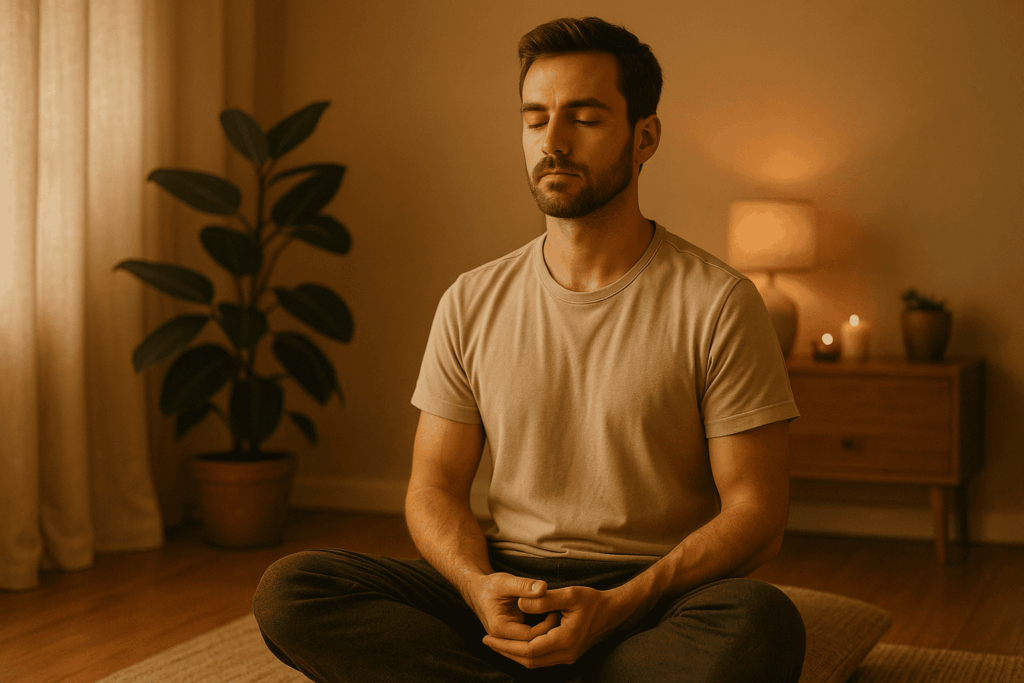
In today’s fast-paced world, stress is almost inescapable. Work deadlines, social pressures, and the constant stream of digital information can quietly drain our mental and emotional energy. That’s why many people are turning to meditation—not just as a wellness trend, but as a proven method for managing stress in both body and mind.
Research by the American Psychological Association has shown that mindfulness meditation can reduce the body’s stress hormone, cortisol, and even reshape parts of the brain related to attention and emotion regulation. These changes aren’t abstract—they can translate to feeling calmer, more focused, and better equipped to handle life’s challenges.
Meditation offers a kind of internal reset. It doesn’t require special tools or perfect silence. Just a few minutes of stillness can help break the cycle of overthinking and emotional overload. For people like me, who are highly sensitive and prone to emotional fatigue, meditation isn’t a luxury—it’s a lifeline.
This article explores simple and science-backed ways to use meditation for stress management—methods you can start practicing at home, even if you’re new to it.
🔗 Recommended External Sources
- APA: Mindfulness-Based Stress Reduction
- NIH: Meditation for Psychological Stress and Well-being – A Systematic Review
Simple Meditation Techniques to Feel Calm
Stress rarely announces itself; it accumulates quietly until focus, mood, and even sleep start to suffer. Meditation for stress management works best when the techniques are simple enough to practice anytime, anywhere. Below are three beginner-friendly approaches you can start using today.
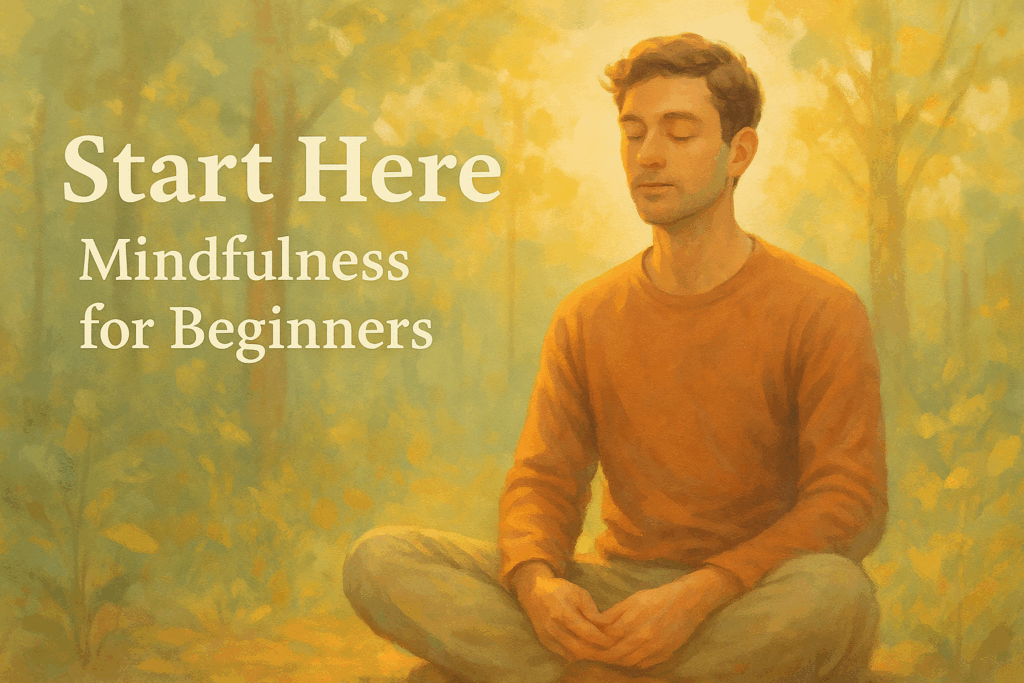
Mindfulness Meditation for Beginners
Mindfulness is the most accessible form of meditation for stress management because it relies only on your breath and attention. Find a chair or cushion, sit upright but relaxed, and set a timer for five minutes. Close your eyes and notice the natural rhythm of your breath—cool air in, warm air out. Thoughts will drift in; when they do, label them (“planning,” “worry,” “memory”) and gently return to the breath.
Why it works:
- Regulates the nervous system – Slow, deliberate breathing shifts the body away from fight-or-flight.
- Improves emotional awareness – By observing thoughts without judgment, you build distance from stressful triggers.
- Strengthens attention circuits – Consistent practice has been shown to increase activity in the prefrontal cortex, the brain’s center for focus and self-control.
Start with five minutes each morning. After a week, add an evening session. Tiny, repeatable doses create the discipline Eric M. and other growth-minded readers look for.
Guided Meditation for Stress Relief
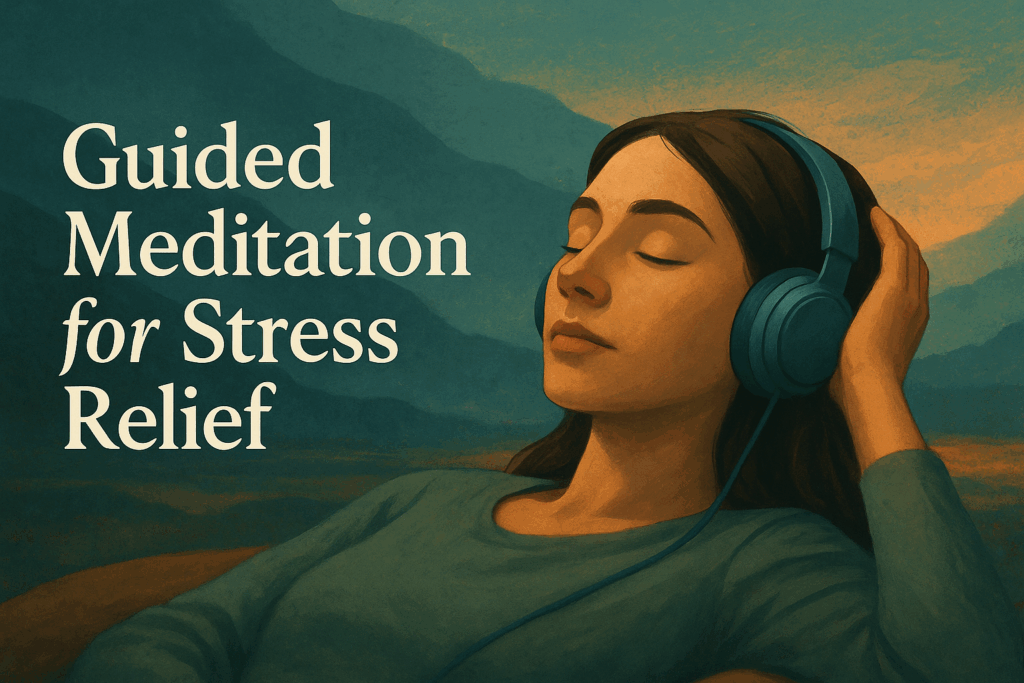
If silent practice feels daunting, guided sessions provide structure. A calm voice leads you through visualizations, body scanning, or mantra repetition. Headspace, Calm, and Insight Timer all offer science-backed programs specifically labeled “meditation for stress management.”
How to use them effectively:
- Choose a single series (e.g., a 10-day beginner course) and finish it before sampling others.
- Wear headphones to reduce ambient noise and immerse yourself in the narration.
- Track your mood in a journal afterward. Seeing measurable drops in anxiety reinforces the habit.
Guided tracks are particularly helpful on high-stress days when self-discipline feels impossible; you press play, follow instructions, and let the structure do the work.
Breathing Exercises and Body Scan
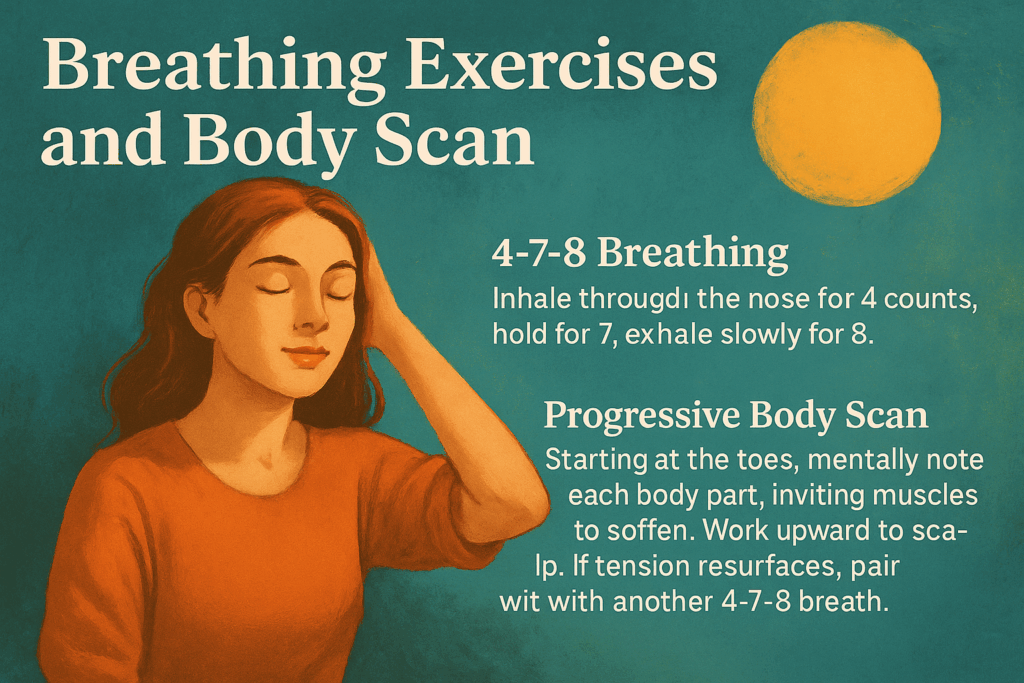
Sometimes the quickest path to calm is through the body. Combine diaphragmatic breathing with a short body-scan meditation:
- 4-7-8 Breathing – Inhale through the nose for 4 counts, hold for 7, exhale slowly for 8. Repeat four cycles. This pattern lowers heart rate and blood pressure within minutes.
- Progressive Body Scan – Starting at the toes, mentally note each body part, inviting the muscles to soften. Work upward to the scalp. If tension resurfaces, pair it with another 4-7-8 breath.
These techniques anchor attention in physical sensation, preventing the mind from cycling through stress-inducing thoughts. Practiced together, they form a rapid-response toolkit you can use before presentations, difficult conversations, or the evening rush of intrusive thoughts.
🔗Helpful resource:👉 Mayo Clinic – Mindfulness Exercises
How to Make Meditation a Daily Habit
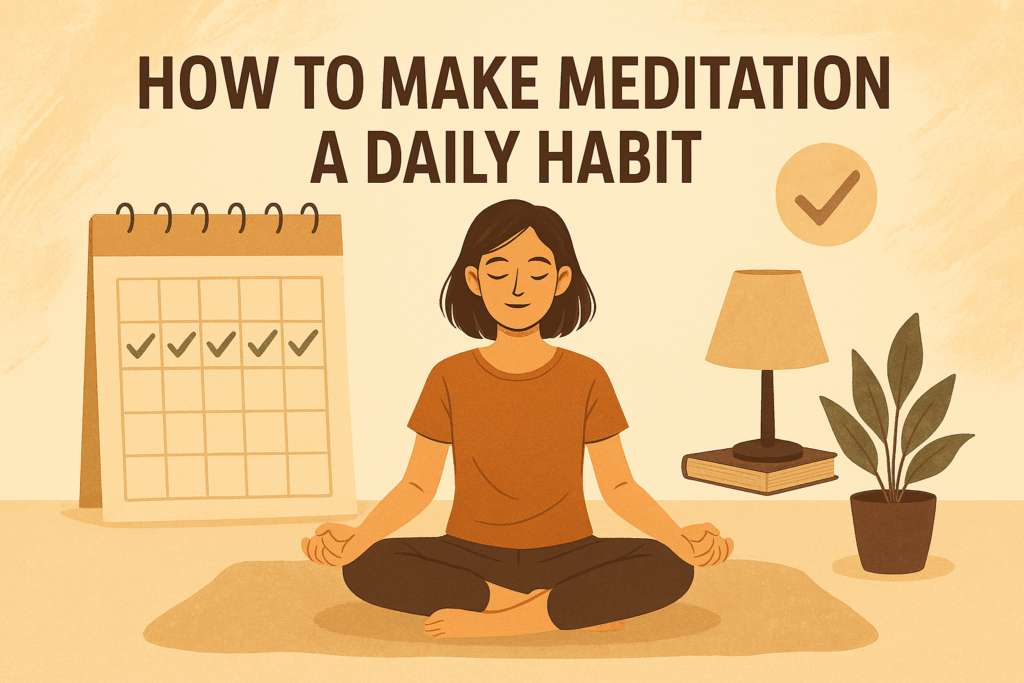
Making meditation a consistent part of your life is often more difficult than learning the techniques themselves. Like any meaningful habit, it requires structure, patience, and a mindset shift—from viewing meditation as a task to seeing it as a way to reset your mind and energy.
Tips for Staying Consistent
The biggest obstacle to daily meditation isn’t time—it’s resistance. We tell ourselves, “I’m too tired,” or “It won’t work today.” But consistency isn’t about perfection. It’s about showing up, even briefly.
Here are three strategies to make meditation stick:
- Anchor meditation to an existing habit.
Pair your practice with something already part of your routine—like brushing your teeth or brewing morning coffee. This psychological trick, called “habit stacking,” reduces friction. - Start embarrassingly small.
Begin with just one mindful breath. One minute. One posture. Lowering the bar makes resistance vanish and builds momentum. - Use visual cues.
Keep your meditation cushion or chair in plain sight. Seeing it reminds your brain: this matters.
Don’t aim for long sessions at first. Focus instead on frequency. Five minutes a day beats 30 minutes once a week. Once you normalize the practice, you’ll naturally want to extend it.
Creating a Calm Space at Home
Environment shapes behavior. When your meditation space is inviting, you’ll be more likely to return to it. You don’t need a dedicated room—just a quiet corner.
Here’s how to build your own calm zone:
- Choose a neutral space free of distractions (no phone, no clutter).
- Add sensory signals of calm: a candle, a plant, a soft rug, or a small lamp.
- Keep it sacred. Try not to do other activities there—train your brain to associate the space with stillness.
Even if you live in a small apartment or share a room, carving out a consistent spot—even if it’s just a chair in the corner—helps turn meditation into a ritual.
Once meditation becomes part of your physical space and mental rhythm, it begins to feel less like something you “have to do” and more like something you “get to do.” That shift changes everything.
Common Challenges and How to Overcome Them
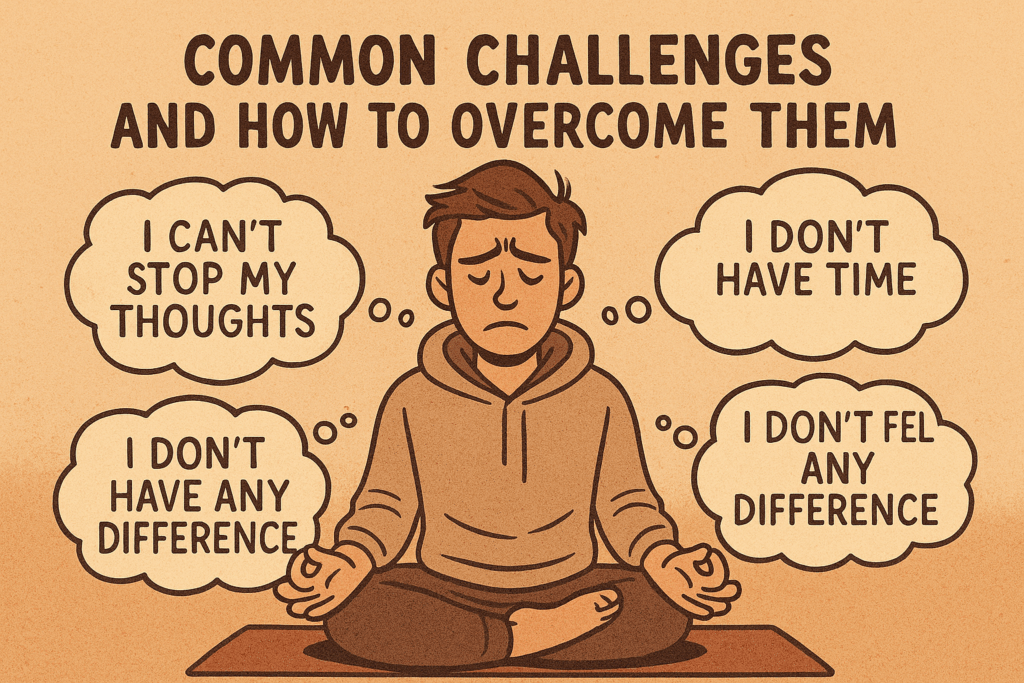
Even with the best intentions, most people struggle when trying to establish a meditation routine. If you’ve ever thought, “I’m not doing it right” or “My mind is too busy,” you’re not alone. These challenges are part of the process—and learning to overcome them is where the real growth happens.
“I Can’t Stop My Thoughts”
This is the most common misconception about meditation. Meditation is not about stopping your thoughts—it’s about noticing them without judgment.
Think of your thoughts like clouds passing through the sky. Your job isn’t to clear the sky, but to watch the clouds come and go. The moment you notice your mind wandering and gently bring it back to your breath, that is the meditation.
Pro Tip: Label the thought gently—“thinking,” “planning,” “worrying”—then return to your breath. This builds awareness without judgment.
“I Don’t Have Time”
You don’t need 30 minutes. Even two mindful breaths can shift your nervous system from stress to calm.
Try a “mindful pause” before meals, when waiting in line, or before starting your workday. Micro-meditations scattered through your day can be as powerful as long sessions.
Pro Tip: Schedule your meditation like a meeting. It doesn’t need to be flexible—it needs to be non-negotiable.
“I Don’t Feel Any Difference”
Meditation isn’t a quick fix—it’s a long game. Just like exercise, results come from repetition. You don’t notice the changes daily, but over weeks, your nervous system becomes more balanced, your reactions more measured.
You might find yourself pausing before reacting, breathing deeper in tense moments, or simply feeling more grounded in your daily life.
Pro Tip: Keep a meditation journal. Track your mood before and after each session. Over time, you’ll see the invisible shifts becoming visible.
Meditation is simple, but not easy. The path is full of distractions, doubts, and detours. But by meeting each challenge with patience and understanding, you build the kind of resilience that lasts far beyond the cushion.
Final Thoughts: The Quiet Strength Within
In a world that celebrates noise, speed, and constant achievement, choosing stillness is an act of quiet rebellion. Meditation for stress management is not just about feeling calm—it’s about remembering your center when life pulls you in all directions.
Every time you sit down to breathe, you’re building a kind of inner strength that doesn’t need to shout. It’s the strength to respond, not react. To observe, not absorb. To pause, and in that pause, choose peace over panic.
You don’t need to be perfect.
You don’t need to empty your mind.
You only need to return—to your breath, to the moment, to yourself.
“You should sit in meditation for 20 minutes every day—unless you’re too busy; then you should sit for an hour.”
—Zen Proverb
As you continue this journey, let each small practice remind you: the strongest version of you isn’t loud, but deeply rooted—like a tree weathering the storm. And every breath is a step closer to becoming that calm, resilient self.
🌿 Recommended Link:
- Tara Brach’s Free Guided Meditations – for deep emotional grounding
- Headspace: Science of Meditation – for research-backed insights
- UC Berkeley’s Greater Good Science Center – for mindfulness resources and studies
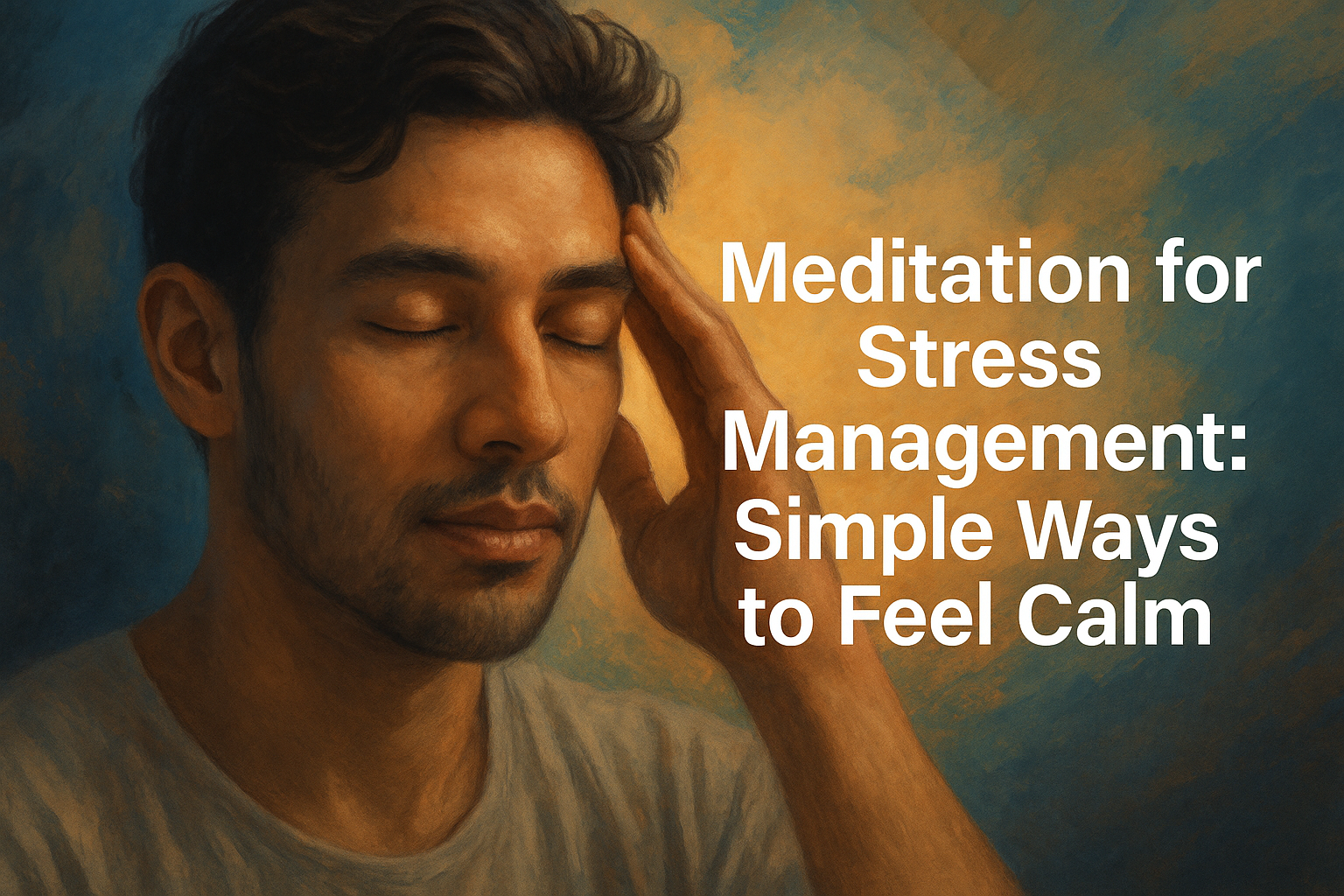
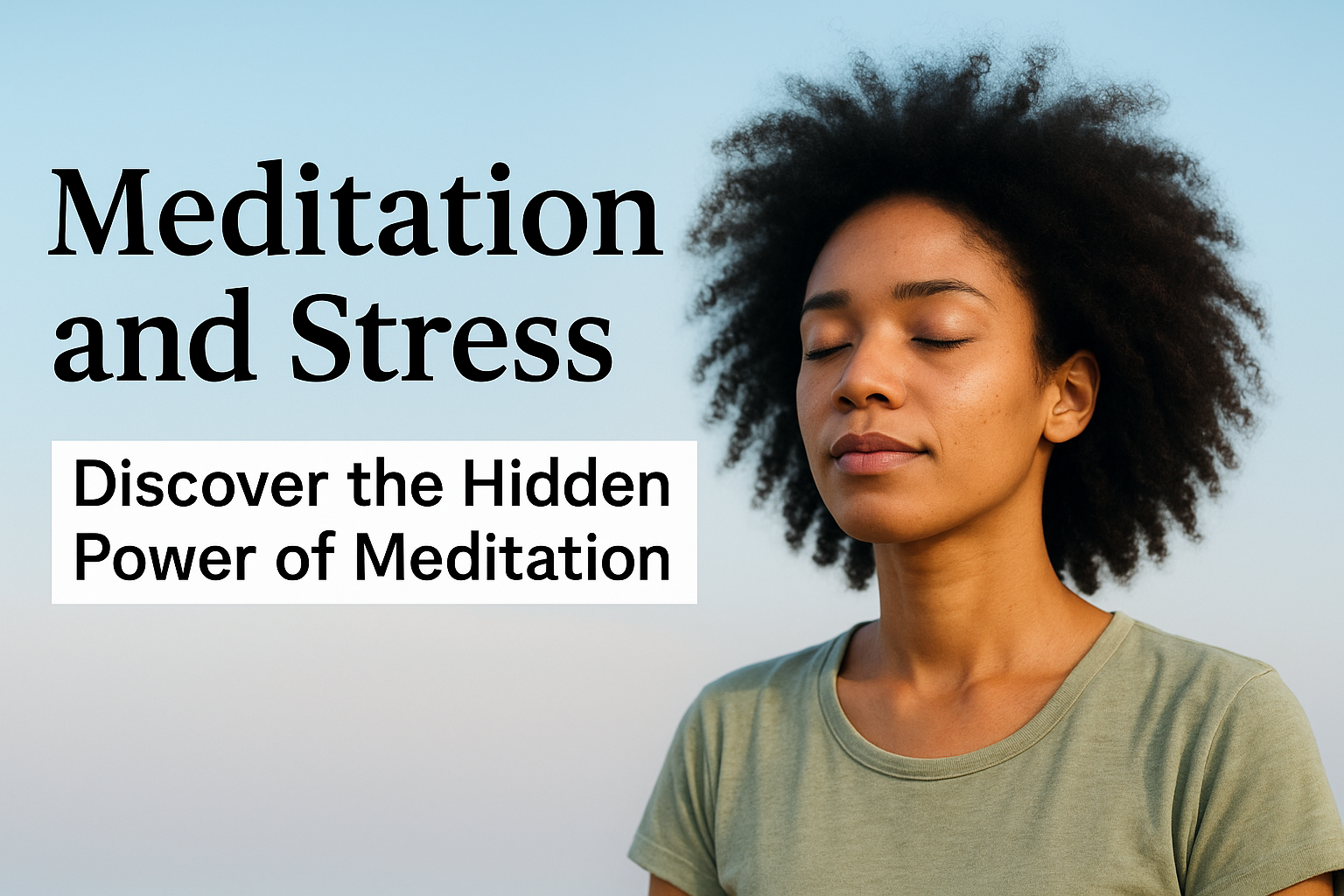


Comments